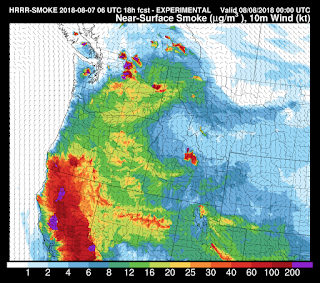Are these claims really true? What does actually fire data show? The truth may surprise many.
In this blog, we will consider whether the number of fires and the acreage burned in California have increased dramatically during recent years.
If this is true, we can discuss why--- it could be climate change, mismanagement of forests, change in fire suppression policy, increased human ignition of fires, people living in places they had not before, invasive flammable species, are some possibilities.
If there is no trend in wildfires, we can examine why.
Let us first consider the wildfire statistics by CALFIRE, the official group in the State of California responsible for the numbers, which suggests a very different story provided by the media and many politicians. The numbers I will show include the entire state.
CALFIRES statisitics show that the numbers of California wildfires over the past 30 years has declined--dropping roughly in half.
A longer-period (one century) view of wildfire frequency and area in California is found in a nice paper by Keeley and Syphard in the International Journal of Wildfire Science: “Different historical fire–climate patterns in California”. They break down the fires in two blocks: (1) areas managed by the US Forest Service (USFS) and (2) the State of California (CAL FIRE). Their results (see below) suggest a maximum number of fires in the 1970s, followed by a substantial decline during the past decades.
Repeat: less fires recently.
 |
| “Different historical fire–climate patterns in California” by Jon E. Keeley and Alexandra D. Syphard. |
In contrast, for the Cal Fire areas, which encompasses lower elevations with greater overlap with human populations, the largest areas burned occurred in the early part of the 20th century. The only exception to this pattern is the south coast, where there is little trend.
The bottom line of the real fire data produced by the State of California and in the peer-reviewed literature is clear: there has been no upward trend in the number of wildfires in California during the past decades. In fact, the frequency of fires has declined.
And in most of the state, there has not been an increasing trend in area burned during the past several decades.
Yes....this and last year had some big fires, but a few years does not make a trend.
So there is a lot misinformation going around in the media, some environmental advocacy groups, and some politicians. The story can't be a simply that warming is increasing the numbers of wildfires in California because the number of fires is declining. And area burned has not been increasing either.
But now we get into the real interesting questions that many are not considering. What is driving the ups and downs in wildfires? There are so many factors that must be considered, such as:
1. The fact that extensive fires are a natural historical part of the ecology of the region
2. The impacts of a huge increase of human population, creating increasing vulnerability while humans are starting most of the fires.
3. Climate change that causes warming and changing the precipitation patterns (both wetter and drier) that influence fire frequency and size.
4. Mismanagement of our forests and wild areas, allowing tree and debris-choked landscapes
5. Invasive and often highly flammable non-native species brought in by man (e.g., cheatgrass and Eucalyptus)
Clearly, climate change is only one possible factor in controlling fire frequency and may not be the most important.
More in future blogs.
<script async src="//pagead2.googlesyndication.com/pagead/js/adsbygoogle.js"></script>
<ins class="adsbygoogle"
style="display:block"
data-ad-format="fluid"
data-ad-layout-key="-fz-11-1w-73+uq"
data-ad-client="ca-pub-9105683284340755"
data-ad-slot="5041557745"></ins>
<script>
(adsbygoogle = window.adsbygoogle || []).push({});
</script>


























































